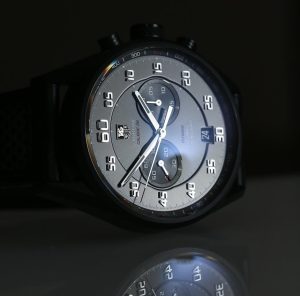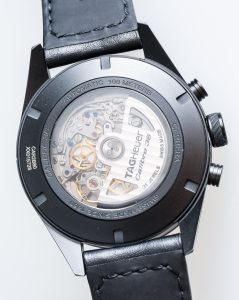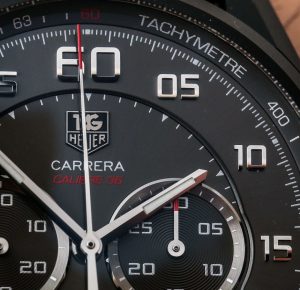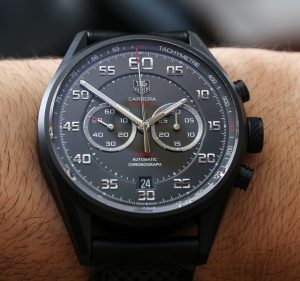The Replica Carrera Calibre 36 Racing made its debut at Baselworld 2013. It was introduced as part of a series of watches equipped with the Calibre 36 movement, and the “Racing” aspect of the name reflects its unique color scheme, strap, and titanium case construction. Interestingly, if you look at our previous articles, you’ll see that during the design and production phases, TAG Heuer realized the hands were too short. The model I’m reviewing has the correct hand size, but early images showed it with hands that were too short. It baffles me why designers continue to produce watches with short hands. Fortunately, brands like replica TAG Heuer catch these issues before production, but many others do not.
Besides the titanium case, what sets the Calibre 36 Racing watch apart from most other Carrera models is the movement. In recent years, TAG Heuer has been positioning the Carrera as a more upscale collection, leading to an increase in the average price. Along with this trend, there has been a remarkable diversity of movements available in the Carrera line. As of 2014, there are at least five different chronograph movements available in the Carrera, including in-house movements by TAG Heuer (like the Calibre 1887 and 1969) and those sourced externally.

The Calibre 36 is not made by TAG Heuer itself but comes from the larger LVMH group that owns Clone TAG Heuer. The Calibre 36 is essentially another name for the “El Primero” movement. Produced by Zenith and used in timepieces by both Zenith and its sister companies, the El Primero is a modern marvel of mechanical watchmaking, with an interesting backstory.

Others have recounted the story in more detail, but the basics are straightforward. During the quartz crisis, Zenith nearly shut down and was sold. The new management ordered the destruction of many tools and plans for movements, including those for the newly developed El Primero. The El Primero was intended to be a groundbreaking movement, but due to the shift to quartz watches, it seemed obsolete. No one at the time would have believed that a few decades later, these high-performance mechanical movements would be valued in luxury watches.

The person tasked with destroying the El Primero plans did not do so and secretly saved everything. He later revealed what he had preserved, much to everyone’s relief. Later, brands like Rolex used the El Primero in their Daytona watches for many years (including much of the 1990s). Today, the El Primero remains a benchmark for high-end, high-performance mechanical chronograph movements. Given that TAG Heuer and Zenith are both part of the LVMH Group, it makes sense for them to share movements. This is why a re-branded Zenith movement is found inside a replica TAG Heuer Carrera.




